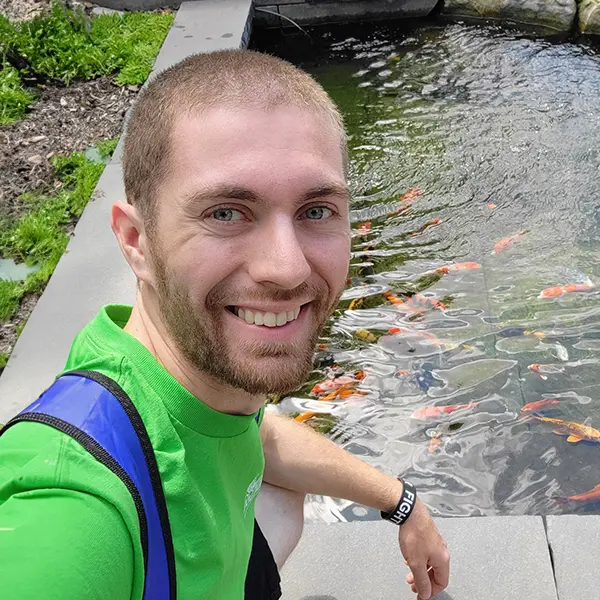
So let’s take a look at what you should do with your unwanted koi and goldfish in Minnesota…
Know The Facts About Goldfish And Koi
Goldfish: The Classic Aquarium Dweller
Goldfish, known scientifically as Carassius auratus, are a friendly face in the world of freshwater fish. You may have had a few yourself growing up. They’re part of the carp family, sharing lineage with species like the Prussian and crucian carp.
These little fish typically measure between 5-8 inches, but don’t be surprised if you find them growing up to nearly 2 feet in the right conditions! They can even weigh as much as 6 pounds. In terms of lifespan, they usually stick around for about 6-7 years, sometimes longer with care.
Koi: The Pond Favorite
Koi, or Cyprinus rubrofuscus, are the colorful domesticated cousin of the common carp. These fish are perfect for outdoor ponds and water gardens, bringing a spectrum of colors – from bright orange and silver to white and black patterns.
They typically range from 1-2 feet in length and are known for their distinctive barbels (whisker-like features) around the mouth, serrated dorsal spine and a deep body. While most koi live between 15-40 years, under the right conditions with the right care, koi have been recorded living over 100 years!
Where Goldfish and Koi Come From
Goldfish originally came from Eastern Asia and parts of Europe, while Koi are native to Eastern Asia and Russia. Unfortunately, both these fish have made their way into natural Minnesota lakes, ponds, and streams.
Adaptability and Habitat
Goldfish are quite the survivors, tolerating murky waters and varying temperatures. They’re typically found in streams and pools with plenty of underwater plants. Koi, on the other hand, prefer freshwater and brackish waters. Both are omnivores and enjoy foraging on lake and pond bottoms.
The Impact They Have
In Minnesota, goldfish and koi are labeled as regulated invasive species. This means they can have negative effects on local waters if they’re released into the wild. They can compete with native fish for food and space. Being bottom feeders, they can stir up sediment, which might harm aquatic plants.
Koi especially, with their barbels, love rooting around on lake and pond bottoms which can quickly destroy Minnesota water ecosystems, leading to the loss of native plants as well as the death of our native fish. Goldfish and Koi are beautiful in your water garden, not in a natural body of water.
Rules to Remember in Minnesota
In Minnesota, these fish are considered a “regulated invasive species.” While it’s okay to have goldfish and koi in your backyard man-made pond or aquarium, you can’t release them into public waters. Using goldfish and koi as bait while fishing is a also no-go.
Best Practices With Your Unwanted Fish
-
Never release these aquarium pets or ornamental pond fish into any Minnesota waters. Not only is release illegal, it is also inhumane. Like any other domesticated animal, your fish deserve proper care.
-
If you are trying to get rid of your unwanted fish, try these alternatives:
-
Contact the original seller to see about a possible return.
-
Try rehoming your pet by giving it away to someone else who can better care for it, donate it to a school with a water learning program, or look for responsible hobbyists.
-
If your fish is sick, you might need to contact a veterinarian or a pet retailer to guide you on proper treatment or euthanasia of your pet. Never release a sick or dying fish into any other body of water!
-
-
If you’re building a water garden, backyard ecosystem pond, or other water reservoir in your yard that will contain ornamental fish, be sure to build it away from natural bodies of water, and to protect against escape if any flooding were to occur.
Goldfish and koi are wonderful fish in the right place. Do your part in caring for our beautiful planet and state by following this guide and best practices. If you need more support, don’t hesitate to Contact Us and let us know how we can help!
*A special thanks to the Minnesota Department of Natural Resources staff and Ecological and Water Resources teams for their education and continued intervention in this statewide issue. More on this can be found in their Goldfish and Koi Best Management Practices.
Want to see water in action, follow our pond journey, and learn more about taking care of your own water feature? Follow us on Facebook, Instagram, YouTube, and TikTok!
Start Your Dream Pond

For unmatched pond building services in Southern Minnesota, contact Superior Ponds at (952) 491 0765.
